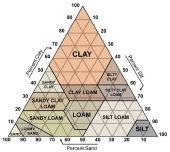Perhaps it is different in North America... but absolutely worms (or other parasites) a cat can get, a dog can also get, including but not limited to: tapeworms, roundworms, hookworms, and whipworms.
Stolen from:
http://northcoastgardening.com/2014/11/composting-pet-waste/
Pre-steps before composting cat waste
The first thing you would need to do is switch your kitty to a biodegradable litter. This would be pellet litter made from recycled newspaper, pine, or litter which is made of corn or wheat. These types of litter are also healthier for your cat. This is because most clay-based litter contains silica dust and chemical additives which can cause trouble with your cat’s digestive system over time.
Composting biodegradable cat litter should always be done with real caution because of the risks of potential pathogens which can be found in cats that eat birds and rodents. The cats can become infected when they eat birds or rodents which are infected with Toxoplasma gondii. This parasite can cause toxoplasmosis which can be fatal to infants and adults with deficient immune systems, and you can catch it from cleaning the litter box and not washing your hands afterward. Therefore, when composting the litter, always wear gloves and wash your hands thoroughly when finished.
How to compost cat poop
HOW TO COMPOST CAT POOP
There are steps to composting cat litter correctly, and the process isn’t an especially complicated one.
First of all for a definite, place your compost pile away from any food growing areas. If you use a bin, make sure it is at least 1 cubic yard/ meter in size. This will keep your pile accessible and easier to turn. A smaller bin is harder to work with and doesn’t heat up as fast or as sufficiently too. In this case, bigger is better.
Choose the litter you’re working with carefully. You can’t use clay litter or litter with deodorant crystals. Your litter has to be 100% composed of plant-based material in order to break down in the compost bin.
Even though there is nitrogen in cat waste, you will have to add more nitrogen to make your compost work. The carbon in the litter is too heavy for the nitrogen in the cat litter to balance unaided. You will need to add any of the following sources of nitrogen: natural seed meal fertilizers, plant material, fresh grass clippings, dried alfalfa; either fresh cow, chicken or horse manure and even leftover veggies from making your salads can be used. As these extra sources of nitrogen decay, it will aid in the composting process.
Make sure you keep the compost pile moist. Keep an eye on it to make sure it is breaking down, and add what is needed when it’s needed to keep it in balance. The other important thing to know is to let the compost sit for at least two years before using it.
***As they have a canine version, just thought I would include it also.
HOW TO COMPOST DOG POOP (
http://northcoastgardening.com/2014/11/composting-pet-waste/ )
If you have a dog, then you have dog waste and depending on how big your dog is, you might have a LOT of dog waste. You probably bag it up or put in in a container until it becomes full; and then take it out to the trash at the curb. But there is another option- a pet poop digester. This is a composting system which turns dog doo into liquid, which dissolves into the surrounding soil and is eaten by microbes. Occasionally a usable compost will build up which you can harvest and use safely in ornamental garden beds, provided the interior of the bin reaches at least 140 degrees Fahrenheit and that you hold off on making new deposits for 8 weeks before harvesting the compost.
How to make a dog poop composting digester:
Take an old (or new) plastic or metal garbage can and drill holes all over and around the sides but leave a few inches at the top intact. This is the area that will be above the ground.
The next step is to cut the bottom off of the garbage can with a reciprocating saw or another tool that will accomplish the job.
Dig a huge can-shaped hole in the area where you’re going to place the can. You will want the can to be above the surface but not to where any of the holes are visible.
Put the can in the hole; fill in around the outside of the can with soil to keep the can in place. Put some rocks in the bottom for drainage too.
Add a dose of septic starter to the garbage can after you’ve made several deposits from your yard cleanup. If the bin smells worse than you think it should, you can try adding one part sawdust to two parts waste to help things compost well.
Make sure that you keep it moist to compost properly. Add more septic starter every few months or as needed to keep things composting.
This composter should be placed well away from any of your other compost areas and vegetable gardens. It should also be placed at least 100 yards away from any body of water.
If you’d prefer a less DIY solution, there are commercially-available systems for under a hundred dollars which connect to your sewer line, and others which work just like the above digester but don’t require drilling or sawing.





 2
2









 1
1




 2
2




 3
3








 1
1




 1
1




 2
2






 1
1

















